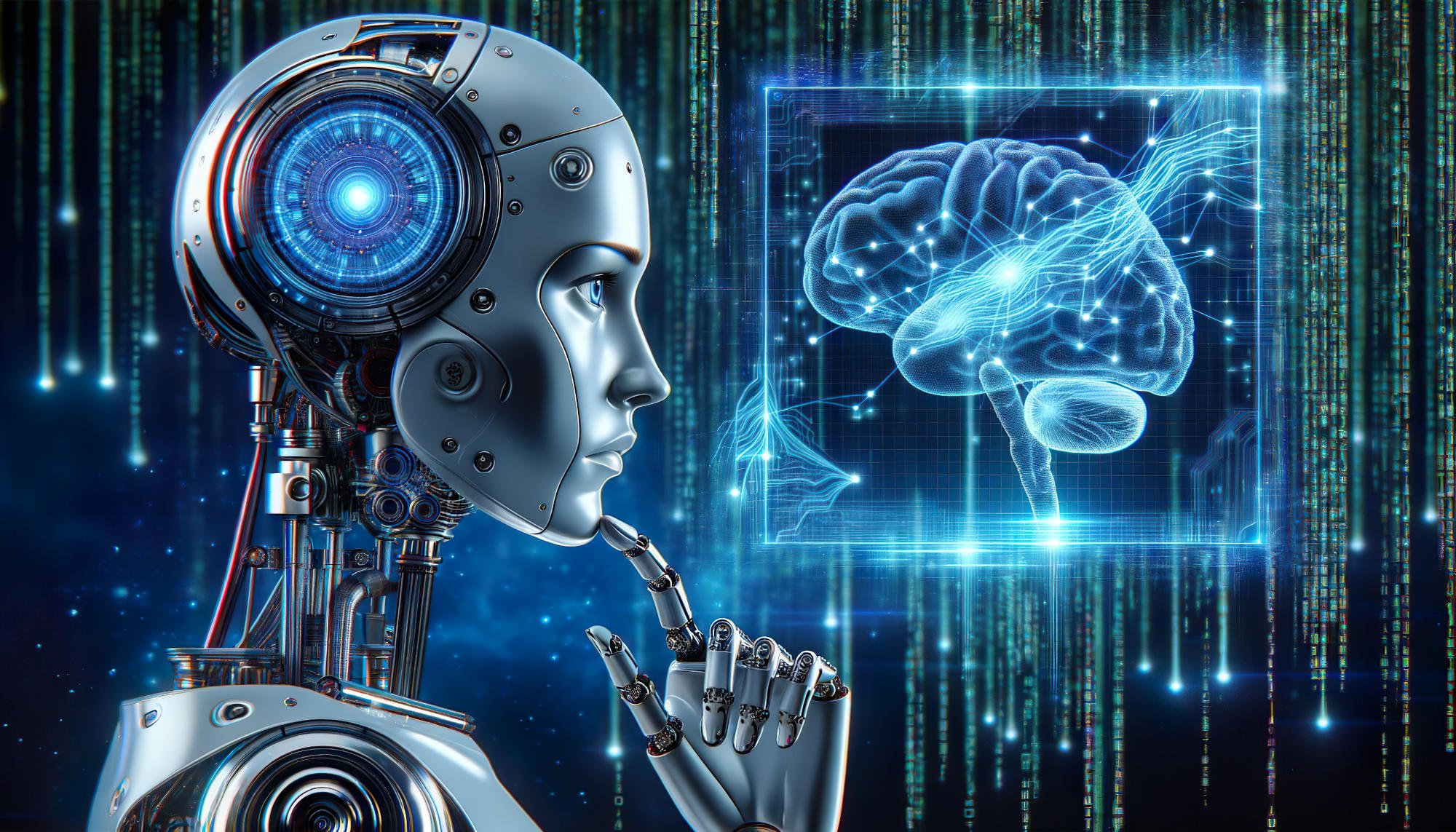
The development of Artificial Intelligence started from this question, behind which there was only one objective that such an intelligent machine should be designed which is as intelligent as humans and has the ability to think, understand and learn like them. In 1995, John McCarthy first used the term Artificial Intelligence. He was an American computer scientist who first talked about this technology in a conference in 1956, so he is called the Father of Artificial Intelligence. Artificial Intelligence is not a new mission. It has been discussed all over the world for decades.
What is Artificial Intelligence?
Artificial Intelligence (AI) refers to the development of computer systems of performing tasks that require human intelligence. AI aids, in processing amounts of data identifying patterns and making decisions based on the collected information.Humans want to get the work of thinking, analyzing and remembering done by the machine computer instead of their brain, so the emphasis is being laid on the progress of Artificial Intelligence, in which computer science is also known as machine learning.
Machine learning is a part of this, it gives the system the ability to learn and distance itself from its experience and the primary importance ,this is to allow computers to learn on their own without human intervention. Machine learning focuses on the development of computer programs that can access data and learn on their own. Just as humans improve their ability from their experience, in the same way, these are the programs through which the machine can do the work of learning.
AI encompasses a range of abilities including learning, reasoning, perception, problem solving, data analysis and language comprehension. The ultimate goal of AI is to create machines that can emulate capabilities and carry out diverse tasks, with enhanced efficiency and precision. The field of AI holds potential to revolutionize aspects of our daily lives.This can be achieved through techniques like Machine Learning, Natural Language Processing, Computer Vision and Robotics.
Examples of Artificial Intelligence
- Fraud Detection: AI algorithms are employed by financial institutions to detect fraudulent activities in real-time. These systems analyse.
- Healthcare Diagnosis and Treatment: AI algorithms are used to analyse medical data, including patient records, imaging scans, and genetic information, to assist healthcare professionals in diagnosing diseases and planning treatments.
Artificial Intelligence (AI) has become increasingly integrated into various aspects of our lives, revolutionizing industries and impacting daily routines. Here are some examples illustrating the diverse applications of AI:
How Does AI Work ?
AI (Artificial Intelligence) works by using algorithms and data to mimic human cognitive functions such as learning, reasoning, problem-solving, and decision-making. It relies on various technologies, including machine learning, deep learning, and natural language processing. Here's a breakdown of how AI works:
- Data Collection AI systems require large amounts of data to learn from. The data can be structured (like databases) or unstructured (like images, videos, or text).
- Processing and Learning Machine Learning (ML): AI learns from patterns in data using statistical techniques. Deep Learning (DL): Uses artificial neural networks to mimic human brain functions for tasks like image recognition and natural language understanding.
- Algorithm Development AI relies on algorithms (sets of rules or mathematical models) to process data. These algorithms improve over time as they are trained with more data.
- Model Training AI models are trained on large datasets using supervised, unsupervised, or reinforcement learning. Supervised Learning: AI learns from labeled data (e.g., images with descriptions).
- Unsupervised Learning: AI finds patterns in unlabeled data. Reinforcement Learning: AI learns through trial and error, receiving rewards for correct actions.
- Inference and Decision Making Once trained, AI can make predictions or decisions based on new input. Example: A chatbot analyzing text to generate a response.
- Continuous Improvement AI systems improve through feedback and additional training. They can refine their predictions and adapt to new situations over time.
Importance of Artificial Intelligence
Today, the amount of data in the world is so humongous that humans fall short of absorbing, interpreting, and making decisions of the entire data. This complex decision-making requires higher cognitive skills than human beings. This is why we’re trying to build machines better than us, in these task. Another major characteristic that AI machines possess but we don’t is repetitive learning. Let consider an example of how Artificial Intelligence is important to us. Data that is fed into the machines could be real-life incidents. How people interact, behave and react ? etc. So, in other words, machines learn to think like humans, by observing and learning from humans. That’s precisely what is called Machine Learning which is a subfield of AI. Humans are observed to find repetitive tasks highly boring. Accuracy is another factor in which we humans lack. Machines have extremely high accuracy in the tasks that they perform. Machines can also take risks instead of human beings. AI is used in various fields like:
- Efficiency and Automation
- Data Analysis and Insights
- Decrease in human mistake
- Available 24×7
- Helps in dull work
- Digital help
- Faster choices
- Rational Decision Maker
- Medical applications
- Improves Security
- Efficient Communication
What will be the future of AI?
The future of AI is incredibly promising and will impact almost every industry. Here are some key trends and possibilities:
- Advanced AI Capabilities
Artificial General Intelligence (AGI): AI may move beyond specialized tasks and start reasoning like humans. Self-Learning AI: AI models will require less human intervention and improve automatically. Explainable AI: AI systems will become more transparent, helping humans understand their decisions. - AI in Everyday Life
Personal AI Assistants: AI-powered virtual assistants will become more intuitive and personalized. Smarter Homes & Cities: AI-driven automation will enhance smart homes, transportation, and energy efficiency. AI Companions: Emotional AI will evolve to provide companionship and mental health support. - AI in Business & Jobs
Automation & Productivity: AI will automate repetitive tasks, boosting efficiency. New Job Roles: While AI may replace some jobs, it will create new roles in AI development, ethics, and oversight. AI-Driven Creativity: AI will assist in writing, design, music, and video production. - AI in Healthcare
Early Disease Detection: AI will improve medical imaging and early diagnosis. AI-Driven Drug Discovery: Faster development of new medicines. Personalized Medicine: Treatments tailored to an individual's genetic makeup. - AI and Ethics
Bias Reduction: Efforts will be made to make AI fairer and less biased. Regulations & Policies: Governments will introduce laws to ensure ethical AI use. AI Safety: Ensuring AI does not pose risks to humanity. - The Rise of Human-AI Collaboration
Cyborg Technology: AI-powered prosthetics and brain-machine interfaces could enhance human capabilities. Co-Working with AI: AI will act as a partner rather than a replacement for human workers. - AI in Warfare & Security
AI-Powered Defense: Drones, surveillance, and cybersecurity will be AI-driven. Ethical Dilemmas: Discussions on AI-controlled weapons and surveillance privacy will continue. - AI and Creativity
AI-Generated Art & Music: AI will co-create with human artists. AI in Film & Storytelling: Personalized entertainment experiences based on AI-generated scripts.
The future of AI is both exciting and challenging, with limitless potential.



Social Plugin